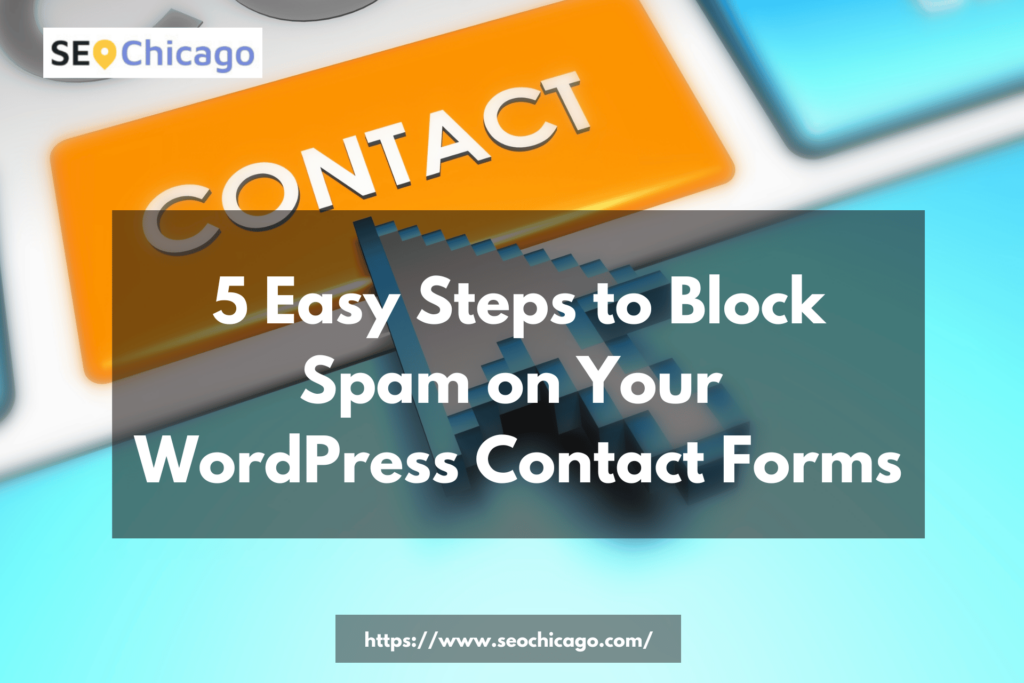How to Stop Spam in WordPress Contact Form
Blocking spam on your WordPress contact forms is essential to keeping your website clean and secure. Not only is spam annoying, but it can also put your site at risk by introducing harmful links and malware. In this blog post, we’ll provide you with five easy steps to block spam on your WordPress contact forms and keep your website safe.
Implement a CAPTCHA
CAPTCHA is a popular method used to block spam on contact forms. CAPTCHA stands for Completely Automated Public Turing test to tell Computers and Humans Apart, and it’s designed to prevent automated bots from submitting spam to your forms. CAPTCHA requires users to prove that they’re human by completing a task, such as solving a puzzle or entering a series of characters.
To add CAPTCHA to your WordPress forms, you can use a plugin such as Google reCAPTCHA or Contact Form 7. Both plugins are easy to use and come with detailed instructions on how to implement the CAPTCHA on your forms.
Use a Honeypot Method
The honeypot method is a simple and effective way to prevent spam on your WordPress contact forms. The method works by adding a hidden field to your form that bots will see and fill out, but humans won’t. When a bot submits the form, the honeypot field will trigger an error, and the submission will be automatically discarded as spam.
To implement the honeypot method on your WordPress forms, you can use a plugin such as WP-SpamShield or Anti-Spam. These plugins will automatically add the honeypot field to your form, so you don’t have to manually add it yourself.
Install an Anti-Spam Plugin
Anti-spam plugins are a powerful way to protect your WordPress contact forms from spam. These plugins use a variety of methods to block spam, including CAPTCHA, honeypot, and IP blocking. The plugins also have built-in filters that will automatically detect and discard spam submissions.
Some of the most popular anti-spam plugins for WordPress include Akismet, Anti-Spam Bee, and Spam Filter. These plugins are easy to install and use, and they’re highly effective at blocking spam on your forms.
Limit Form Submissions
Limiting the number of form submissions is another effective way to block spam on your WordPress contact forms. This method works by limiting the number of submissions a user can make within a specific time period. For example, you might limit submissions to one per day or one per hour.
To limit form submissions on your WordPress site, you can use a plugin such as Limit Submissions or Contact Form 7 Limit Submissions. These plugins will automatically limit the number of submissions a user can make, and they’ll display an error message if the limit is reached.
Monitor Form Submissions
Finally, monitoring your form submissions is an important step in blocking spam on your WordPress contact forms. Regularly checking your form submissions will allow you to identify and block any spam that gets past your other anti-spam measures.
You can monitor your form submissions by regularly checking your email inbox or using a plugin that will send you notifications of new submissions. You can also use a plugin such as Contact Form 7 Database to store and view your form submissions in your WordPress dashboard.
In conclusion, blocking spam on your WordPress contact forms is essential to keeping your website clean and secure. By implementing a CAPTCHA, using a honeypot method, installing an anti-spam plugin, limiting form submissions, and monitoring form submissions, you can effectively block spam and keep your website safe. With these five easy steps, you’ll be able to ensure that your forms are protected from spam and that you’re only receiving legitimate submissions.
